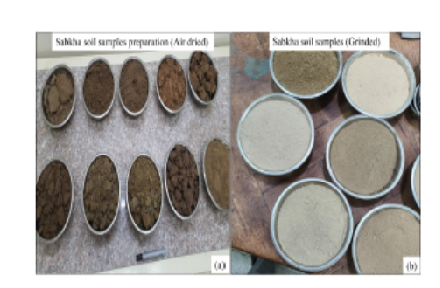


Indian Journal of Science and Technology
DOI: 10.17485/IJST/v16i36.1320
Year: 2023, Volume: 16, Issue: 36, Pages: 2938-2951
Original Article
Zaheer Uddin Babar1*, Muzamir Hasan1, Abdul Wahab1
1Faculty of Civil Engineering Technology, Universiti Malaysia Pahang Al-Sultan Abdullah Lebuh Persiaran Tun Khalil Yaacob 26300, Kuantan Pahang, Malaysia
*Corresponding Author
Email: [email protected]
Received Date:03 June 2023, Accepted Date:20 August 2023, Published Date:27 September 2023
Objectives: Sabkha soil is widely formed in the Arabian Gulf in the Kingdom of Saudia Arabia, particularly along the coastline. Over the past 25 years, numerous studies have been conducted to understand and characterize sabkha soil and increase its strength and durability. To enhance the geotechnical properties of Sabkha soil using an environmentally friendly electrokinetic stabilization method. From a geotechnical perspective, the construction process heavily depends on improving weak soil strength, durability, and treatment cost. The presence of water, high salinity, low shear strength, and low specific gravity are the soft geotechnical features that need to be enhanced before any construction on sabkha soil. Methods/Analysis: The electrokinetic stabilization method was applied to extract salty particles and enhance the geotechnical properties of sabkha soil. The voltage gradient of 40 V was applied for 1, 3, and 7 days using stainless steel electrodes. Findings: The result showed an outstanding improvement of sabkha soil geotechnical properties where the shear strength was increased from 116 to 165, 230, and 360 kPa for Rabigh I (RI), 122 to 155, 254, and 371 kPa for Rabigh II (RII), and for Rabigh III (RIII), the shear strength was improved up to 405 kPa. The moisture content decreased from 34.5 to 16.8% for RI, 35.2 to 15.9% for RII, and 37.5 to 14.7% for RIII. Novelty and applications: Experimental results demonstrated that all parameters were improved massively by increasing the voltage gradient and operational time. This technique is highly recommended to strengthen weak soil and improve geotechnical properties.
Keywords: Sabkha soil; geotechnical properties; electrokinetic stabilization
© 2023 Babar et al. This is an open-access article distributed under the terms of the Creative Commons Attribution License, which permits unrestricted use, distribution, and reproduction in any medium, provided the original author and source are credited. Published By Indian Society for Education and Environment (iSee)
Subscribe now for latest articles and news.